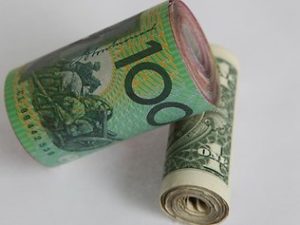 Australian dollar traded lower against its US counterpart on Wednesday, after yesterdays report on retail sales in the United States supported expectations that the Federal Reserve Bank may continue to pare back its monthly monetary stimulus throughout the year.
Australian dollar traded lower against its US counterpart on Wednesday, after yesterdays report on retail sales in the United States supported expectations that the Federal Reserve Bank may continue to pare back its monthly monetary stimulus throughout the year.
AUD/USD touched a session low at 0.8908 at 7:10 GMT, after which consolidation followed at 0.8912, losing 0.60% for the day. Support was likely to be received at January 10th low, 0.8876, while resistance was to be encountered at January 14th high, 0.9054.
According to data by the Census Bureau, part of the US Department of Commerce, nations retail sales increased 0.2% in December, exceeding analysts’ expectations of a 0.1% increase. In November retail sales gained 0.4%, which was a revision down from a 0.7% gain previously.
Core retail sales, which exclude sales of automobiles, rose 0.7% in December, after a revision downwards to a 0.1% gain in November from a 0.4% increase previously. Retail sales are considered as a crucial indicator regarding the trend in consumer spending and overall economic development in the United States. Consumer spending has a key role, as it accounts for almost 70% of the US economic growth.
This report provided support to greenbacks demand, as it favored the view that the Federal Reserve Bank may continue tapering during the year. Central banks policy makers said on December 18th that they will reduce monthly asset purchases to $75 billion from $85 billion, underscoring improving labor market conditions. The bank will probably continue to pare stimulus by $10 billion at each policy meeting before exiting the program in December, according to a Bloomberg News survey of 41 economists, conducted on January 10th. The Federal Open Market Committee is scheduled to meet next on January 28th-29th.
In addition, Fed President for Philadelphia Charles Plosser said on Tuesday that he would prefer to end the central bank’s stimulus program before late 2014. Fed President for Dallas Richard Fisher said that he would strive to eliminate the program entirely “at the earliest practicable date.”
“The U.S. dollar should continue to fare well this year,” said Khoon Goh, a Singapore-based strategist at Australia & New Zealand Banking Group Ltd, cited by Bloomberg. “The Fed speakers this week so far have continued to support tapering, pointing out that the weak payrolls number last week was a one-off, so that caused the market to rethink their positions.”
Later in the day the United States is to report on the index of producer prices. The median estimate pointed that the PPI will advance 0.4% in December compared to a month ago, after in November it dipped 0.1%. A larger than projected increase would certainly heighten the appeal of the greenback.
A separate report is expected to show the performance of the first US manufacturing activity indicator during the current month, the New York Empire Manufacturing Index. Expectations pointed to an advance to 3.50 in January from 0.98 in December, with positive readings indicating that activity in the sector expanded.
Meanwhile, in Australia, new auto sales increased 1.7% in December compared to November, following a 2.1% gain in the preceding month. This report is usually considered as an indication for consumer confidence in the country. If demand for expensive durable goods increases, this means that consumers feel more confident about their future financial prospects, thus they are willing to spend more. On annual basis, new auto sales increased 0.1% in December, after a 0.2% drop in November.
Elsewhere, the Aussie was lower against the euro, with EUR/AUD cross gaining 0.29% on a daily basis to trade at 1.5306 at 8:00 GMT. AUD/NZD pair was losing 0.19% to trade at 1.0683 at 8:01 GMT.





